5 Anti Drug Propaganda Films That Used Women In A Pervy Way

Decades of anti-drug films taught our grandparents -- and some current politicians -- that one tiny toot on the first spliff you encounter will transform you into a gibbering dance-in-the-puddles-of-the-fresh-blood-you-just-spilled psychotic. But there was an even stranger, sleazier subgenre of drug paranoia films that boiled down to "DRUGS WILL RUIN OUR LADYFOLK! And in the process, they MIGHT GET NUDE!" Movies like ...
Marihuana: The Weed With Roots In Hell!
Right away, you're going to notice that some of these movies were using their anti-drug message as a thin excuse for some good old-fashioned gratuitous titillation. The 1936 feature Marihuana: The Weed With Roots In Hell! goes full throttle into T&A meets THC territory. The director, a WWI veteran and building contractor named Dwain Esper, built a career out of similar creative choices, with titles such as Sex Madness and How To Undress In Front Of Your Husband, making him a pioneering forefather of exploitation/grindhouse movies. But really, what good is a cautionary tale of addiction if you can't masturbate to it?
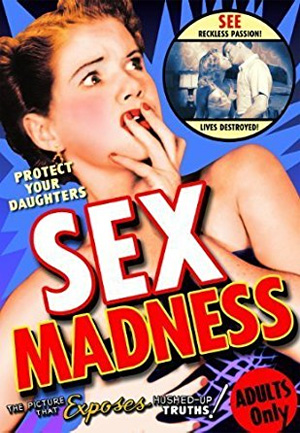
We dare say that the plot here is secondary to all the garter-flashing and sideboob implications. A young girl discovers weed, gets knocked up, and becomes a desperate criminal. The young girl in question, named Burma for some reason, makes the fatal mistake of going to a beach party where marijuana (er, marihuana) rears its leafy head. It turns out to be a pretty eventful evening, as one girl drowns while Burma gets bun-in-ovenated by her boyfriend.
Being that this was the 1930s, this was an instant marriage sentence, so the both of them go to work for the local pot pushers to provide for their new family unit. Burma's boyfriend is soon killed during a deal gone sour, while she suffers the even more terrifying fate of facing the rest of her days as a lonely spinster. Well, she actually may have done alright for herself on that front, due to her skill at public skirt-lifting.
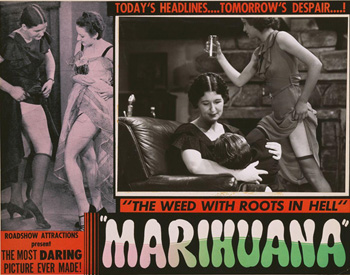
The opening crawl notes that the picture was " Made with the cooperation of the federal, state and police narcotics officials." This isn't the only case of this sort of movie, legitimately or not, claiming a partnership with the authorities. But it does seem like a good deal for everyone involved. The movies get some free credibility, while the police union halls receive some free spank material for bachelor parties.
The Pace That Kills
Cocaine use was a problem decades before rolled-up, residue-laden dollar bills were making life complicated for vending machines and strippers in the 1980s. The 1935 film The Pace That Kills (also known as The Cocaine Fiends and Cocaine Madness) tackled the issue head-on. Or rather, hands-on. Hands on boobs.
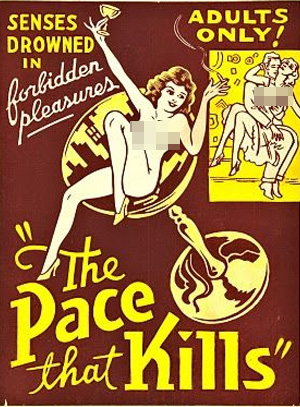
In what is clearly a pattern with these films, the plot follows the sad decline of a young woman whose virtue was lost to the ravages of a Schedule II stimulant. The main character in this one, Jane, is seduced by a big-city "dope and girl" racketeer with the help of his surplus of "headache powder." With pimping technology still in its infancy (or because blatantly showing her being turned out as a prostitute might have led to the filmmakers' arrests), the drug dealer actually marries Jane. He then forces her to work at a seedy dive called the Dead Rat Cafe.
Then things shift over to Jane's brother, Eddie. He's in the big city too, searching for his delinquent sister and hoping to bring her home to the safety of the suburbs. But he too falls prey to the siren song of "headache powder," and is soon an unemployed, degenerate addict. He must now rely on his fiance and fellow fiend Fanny to procure cash by any means necessary so that he can spend his days at "Wong Lee's Drug Den." Jane and Eddie eventually cross paths, and while she convinces her brother to return home, she laments that it's too late for her, because "girls can't come back."
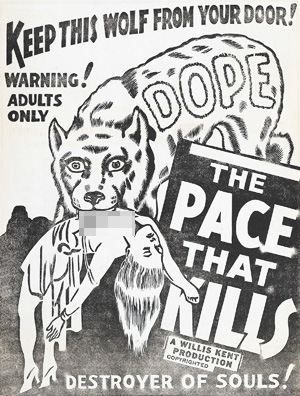
Long story short, just about everyone either dies or goes to jail. Having run out of happy ending options, the script gets desperate. Things wrap up with an ancillary male character revealing himself to be an undercover member of the vice squad. He then expresses his love for a female ancillary character and tells her he was there to get "silly little girls out of jams." He then convinces her that as long as she stops her "questing," they can live happily ever after. We can presumably assume that "questing," in this circumstance, is a synonym for "coke whoring." If only all silly wayward women could find such a hero.
Assassin Of Youth
Rather than go straight for the exploitative scenes of reckless teenagers puffing it up as a prelude to diving headfirst into blood orgies, the producers of this 1937 feature actually told a story. It was a slow boil, making you wait a good eight minutes for the blood orgies. Or rather, the "weenie bake." More on that in a minute.
The main character in Assassin Of Youth is a fella, a newspaper reporter who infiltrates a small town, poses as a soda jerk, and exposes an insidious cannabis epidemic. However, his entire mission's raison d'etre is to investigate a young woman, one who stands to inherit a fortune from her recently deceased grandmother (who was run down by horny, weed-smoking youths) so long as she abides by a " moral clause." Presumably meaning she lays off the hippie lettuce and whatever other wanton tomfooleries are igniting within her nubile pre-WWII loins.
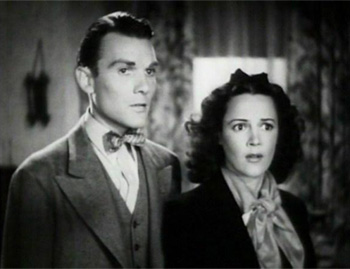
Joan, the young woman in question, gets off to a bad start, as she is one of the attendees at the aforementioned weenie bake (a weenie roast, in 1937 jargon), where a joint gets passed around ("The man who sold them to us told us they wouldn't hurt us!") and the depraved act of skinny dipping ensues. One imagines audiences rushing out of the theater in tears to go vomit in the alley.
To really drive home the dangers of cannabis consumption, the next scene shows the reporter's boss going over damning statistical horrors like "According to a certain district attorney, 17 out of 37 murderers in his district were marijuana addicts. As were 13 out of 145 forgers." He then pulls out some photos of loco weed-induced suicide victims. And to REALLY make sure you are convinced, the film segues to the interrogation of a murder suspect who claimed that smoking some grass before bed led to a dream about people trying to saw his limbs off. Which compelled him to murder the crap out of them in real life first, naturally.
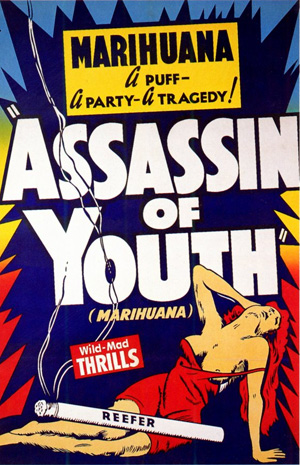
The oddly convoluted plot then returns to Joan's struggle to keep her virtue unsullied in the face of botanical temptation. Due to space restrictions, I can't detail every twist and turn, but luckily, the plot falls right into that old "Girl's jealous, pill-popping sister tries to frame her, then almost stabs a dude, then marijuana peddlers get tricked into a police sting, followed by an impassioned courtroom speech decrying the evils of cannabis, then girl marries the undercover reporter" trope.
Luckily for her, Joan doesn't turn out like her sister, who's diagnosed by a doctor to be a "psychopathic case" who is "on the verge of insanity" because of her drug use (maybe the whole movie should have been about her?). Only because Joan had enough inner fortitude to do a fair-to-middling job of abiding by the vaguely-defined morality clause did she get the happily ever after treatment. Meanwhile, all the guys at those parties presumably went on to smoke their asses off while enjoying great success making progressively more tiresome comedies with Jonah Hill and James Franco.
Protect Your Daughters
Protect Your Daughters (alternately titled Reckless Decision) was a depression-era effort to steer ignorant womenfolk toward the straight, narrow, and abstinent. In this 1932 melodrama, the boogeymen are the vices of liquor, parties, and dancing (to the devilish jungle rhythms of that newfangled jazz music).
The film begins with a young lady in her period-appropriate underwear arguing with her mother. She wants to go gallivanting around town with a certain young man whom she considers quite snazzy, but mom wants to put the kibosh on the whole boondoggle because she felt the ginchy hep cat was all wet. Also, because she smells the stink of gin on the both of them. When Dad comes in to investigate the hullabaloo, he sets Mother straight and lets the girl head out, but not before HOLY CRAP DID HE JUST KISS HER RIGHT ON THE MOUTH?
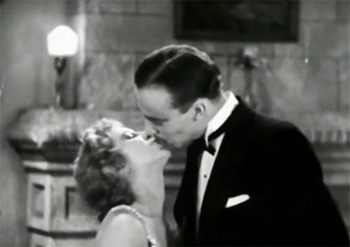
All the actors are pretty much supporting characters, while the real star of the show is hilariously terrible parenting advice. Explaining to his wife why he vetoed her ass and let their sass-mouth daughter out to go flooze it up, he states that his motto is to never suspect that kids will ever do anything wrong, because "When you suspect your children of wrong, you'll wish it on them." He then claims that mothers are solely responsible when daughters go bad, while fathers are solely responsible for the sins of their sons. Obviously.
So you'd assume that Hard-Smoochin' Daddy is supposed to be the villain here ("Behold the dangers of infamously permissive 1930s parents!"), but wait! This baffling, slapdash production has more tricks up it sleeve. After a pastor shows up to lament the teens he sees prancing around "half-naked" in the streets ("These modern young rowdies are headed for perdition!"), the focus then shifts to a totally different young woman and her tale of woe. Her father turns out to be the overbearing preacher, so it seems like we're being told now that holy helicopter parenting is to blame when she succumbs to that devil hooch, her virtue goes kerblooey, and she winds up in an unhappy marriage.
After lolling around in her drunkitude for awhile, she runs home, and everything seems to sort itself out after Dad apologizes for being such a hardass. He then delivers a sermon admitting his mistakes by blathering weird nonsense like "You can't put old wine into new jugs" and "No boy and girl in their folly can break through the power of marriage!" And the final scene brings things full circle, as the girl from the beginning calls her creepy dad to tell the family she's getting married herself. Everyone seems as pleased as punch.
So what the hell was even the lesson here? Let's put it this way: Large chunks of the movie were cobbled together during the hasty editing process with footage from an entirely different film. This "Girls tempted by vice" genre was so hot back then that they were just throwing crap together, like those weird YouTube nursery rhyme videos. Who cares about message? This business is all about volume, sonny!
The most polished of the bunch, 1949's She Shoulda Said No! (also released under the title Wild Weed) features actual production values and a cast that wasn't made up of randos the director pulled out of diners and dockside bars. The lead actress, a proto-Kardashian named Lila Leeds, was capitalizing on her brief fame gained from getting arrested for smoking pot at a party with Robert Mitchum. It was also legendary character actor Jack Elam's first film. Don't recognize that name? Well, chances are good you know his cat's breakfast of a face.
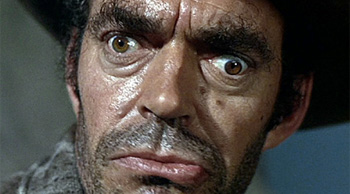
But while the producers may have sunk a little more money into this offering, the plot still fell into the same "Nice girl gets high, becomes public enemy number one, and now has no hope of marrying a decent fella" routine. To gain attention, a story was concocted that the United States Treasury Department had a hand in the filming. And new, sexed-up posters advertising an abundance of "hopped up harlots" with tag lines like "How Bad Can Good Girls Get?" were introduced after the initial release in order to attract more horndogs.
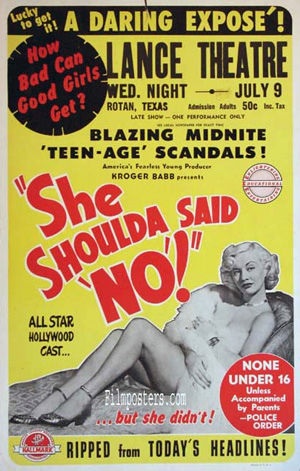
Based on the actual experiences of Lila Leeds, the character she plays is an orphan named Anne (not Annie, that would be stupid), who eventually redeems herself after marijuana use causes her to be sexually promiscuous by ... becoming a narc. The former chorus girl is convinced to become a stoolie for the Man after a brief stint in the hoosegow, which apparently did the trick in terms of restoring some semblance of her respectability, despite the fact that the filmmakers did everything in their power to put Leeds' raw sensuality front and center.
Filmed in only six days, Leeds spent much more time than that making appearances around the country at theaters, even giving lectures. You might might say that such attempts at public service were laudable, until you hear about how the movie was often played at salacious midnight double billings, marketed in a way that the distributor could " ... cash in and move to his next stop as fast as possible." You know ... we're starting to think that people out to police morality may not always have our best interests at heart.
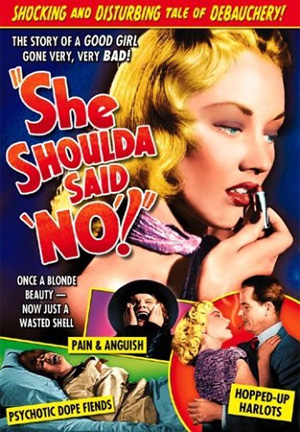
E. Reid Ross is the author of Canadabis: The Canadian Weed Reader, which is in stores now and available on Amazon or direct from Simon & Schuster.
Reefer Madness, heck of a musical wasn't it?
If you loved this article and want more content like this, support our site with a visit to our Contribution Page. Please and thank you.
For more check out The 23 Worst Overreactions To Marijuana and The 5 Most Ineffective Anti-Drug PSAs of All Time.
Also follow us on Facebook. It's free.